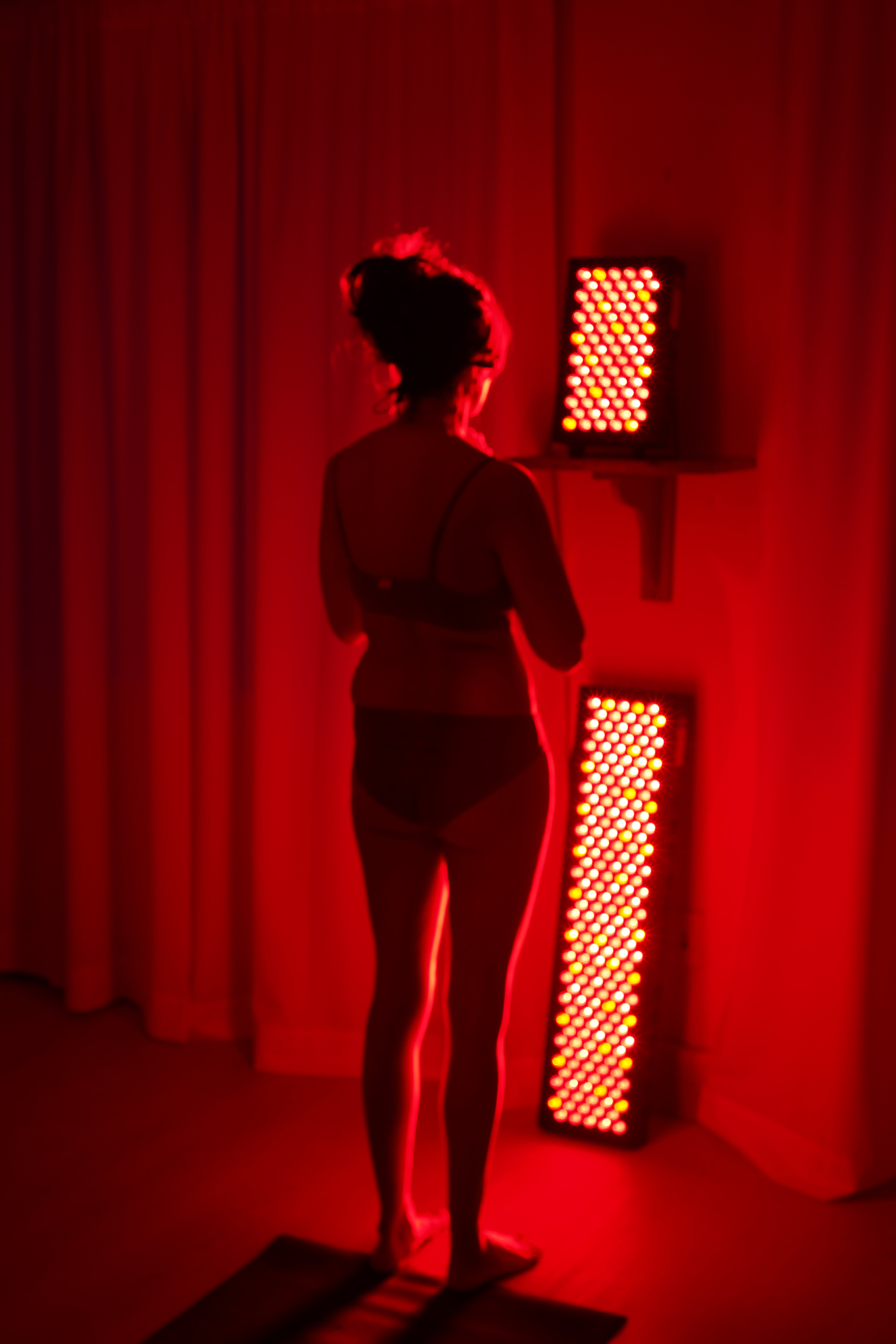Red light therapy has gained popularity for its ability to rejuvenate skin, reduce fine lines, and promote a healthier complexion—all without invasive treatments or downtime. But how much light do you actually need for skin care, and what’s the right way to use your red light device?
This guide breaks down the science, the numbers, and the practical steps you need for a truly effective skin care routine—tailored for a device that outputs 75 mW/cm² at 12 inches (and showing adjustments for greater distances).
How Red Light Therapy Works for Skin
Red and near-infrared light (600–900nm) penetrates the skin to reach mitochondria inside your cells, where it boosts ATP production, reduces inflammation, and stimulates collagen synthesis.
But skin is sensitive—more light is NOT always better. Research shows there’s a “sweet spot” where you get maximum benefits, and higher doses can actually slow your progress.
Understanding Dosing: How Much Is Enough?
The Goldilocks Principle:
-
Too little: Not enough change
-
Just right: Maximum improvement
-
Too much: No extra benefit (or even irritation)
For skin care (anti-aging, collagen, healing, acne):
-
2–6 Joules/cm² (J/cm²) per session is ideal
Higher doses are only used for deep tissue, joints, or pain—not for the face or delicate skin.
Factoring in Reflection: How Much Light Really Gets In?
Up to 30–50% of red and NIR light is reflected away or scattered at the skin’s surface, especially if the skin is dry, light in color, or not perfectly clean.
Example:
-
Your device delivers 75 mW/cm² at 12", but only about 35–50 mW/cm² may be absorbed by living skin layers.
Most professional guidelines recommend dosing based on “surface dose,” knowing some is always lost to reflection. So, when you aim for 2–6 J/cm² on the surface, you can be confident you’re still in the right range.
Dosing Table: How Long to Use Your Panel for Skin Care
Below are safe and effective times for each distance, assuming you want to deliver 2, 4, or 6 J/cm² at the skin surface. For greater precision (and to offset reflection), you can extend these times by 25–50% if desired.
| Distance | Approx. Irradiance | 2 J/cm² | 4 J/cm² | 6 J/cm² |
|---|---|---|---|---|
| 12 inches | 75 mW/cm² | 27 sec | 53 sec | 80 sec |
| 24 inches | 30 mW/cm² (est.) | 67 sec | 133 sec | 200 sec |
| 36 inches | 15 mW/cm² (est.) | 133 sec | 266 sec | 400 sec |
To adjust for reflection:
-
For maximum thoroughness, multiply times by 1.5 (e.g., 53 sec × 1.5 ≈ 80 sec at 12" for 4 J/cm² absorbed).
Step-by-Step Skin Care Protocol
1. Cleanse Your Skin:
Start with clean, dry skin. Remove all makeup, sunscreen, and oils.
2. Set the Distance:
For best results, use 12 inches for focused facial care. Use 24–36 inches for larger areas or if you have sensitive skin.
3. Set Your Timer:
-
12 inches: 1 minute per area for normal skin (up to 2 minutes if reflecting loss)
-
24 inches: 2–3 minutes per area
-
36 inches: 4–6 minutes per area
4. Protect Your Eyes:
Red and NIR light is generally safe, but avoid direct eye exposure.
5. Frequency:
-
3–5 sessions per week for the first 2 months
-
2–3 sessions per week for maintenance
6. Aftercare:
-
No special care needed. Moisturize as usual.
-
Avoid harsh exfoliants or actives (like retinol) for a few hours after, if you have sensitive skin.
How Much Is Too Much?
Don’t exceed 6 J/cm² per session for skin, and don’t use your device for more than 2–3 minutes per area at 12 inches.
More is NOT better—higher doses can slow skin healing and cause mild irritation.
Sample Weekly Routine
| Day | Routine |
|---|---|
| Mon | 1 min at 12", after cleansing, moisturize |
| Wed | 2 min at 24", after cleansing, serum |
| Fri | 1 min at 12", after cleansing, moisturize |
Pro Tips to Maximize Results
-
Slightly damp skin (not wet) can help reduce reflection and increase absorption.
-
Consistency matters more than high doses.
-
Use your device’s continuous mode—pulsing is not shown to be more effective for skin care.
Common Questions
Should I use for longer to offset reflection?
If you want to be thorough, you can multiply the above times by 1.5. But 2–6 J/cm² on the surface is already safe and effective per the majority of clinical research.
What about pulsing?
Pulsing is not proven to be superior for skin care. Continuous mode is best supported by research.
Can I use with serums or creams?
Use on clean skin, then apply products after. Don’t use sunscreen or makeup during therapy.
Bottom Line
Red light therapy is safe and effective for skin care when used with proper dosing.
-
1–2 minutes per area at 12 inches (for 2–4 J/cm²) is ideal.
-
Don’t exceed 6 J/cm² or 2–3 minutes per area.
-
Adjust slightly upward if you want to compensate for reflection, but don’t overdo it.
-
Consistency and correct dosing are far more important than using a higher setting or longer sessions.
Ready for healthier, more radiant skin? Start your regimen today, and let your light shine!



Pulsed Red Light Therapy: Science, Hype, and What We Really Know
Why we are developing a Health Canada approved face mask